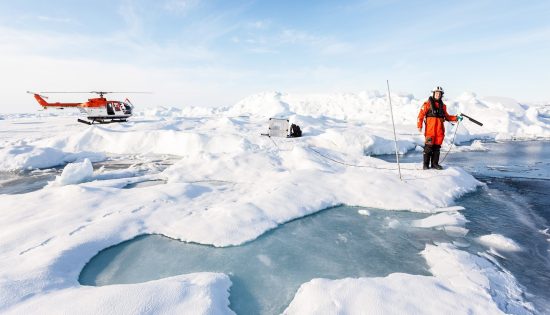






The
major international Arctic research organisations, with the involvement of the indigenous
peoples of the Arctic, have come up with a set of common goals for the coming
decade. Under the auspices of the International Arctic Science Committee
(IASC), based at the Alfred Wegener Institute in Potsdam, they will submit a
report that sets the path towards a jointly conceived and solution-oriented
research agenda for the sustainable development of the Arctic and beyond.
The
Arctic is a place which reacts fastest and is the most sensitive to changes in
the climate. However, occurrences that take place here do not remain within the
region, but has repercussions in other parts of the world. Case in point: the
reduction of the sea ice cover as well as the thawing of the permafrost, snow
and glaciers all have an impact in the global climate. The same can be said
about the growing economic and geopolitical interests in the Arctic.
“The goal of science has
to be to generate knowledge and to pass it on to decision-makers, so that they
can be prepared for these changes and not only react to them,” said Dr Volker Rachold,
Executive Secretary of the IASC at the Alfred Wegener Institute, Helmholtz
Centre for Polar and Marine Research.
Besides
questions and focal points, the report – entitled “Integrating Arctic Research:
A Roadmap for the Future” – also shows how science should tackle these issues.
Rachold listed the three main priorities that emerged.
The
first priority was to explore the role of the Arctic within the global climate.
Secondly, the research organisations wanted to add better models and forecasts
about future climate development in the Arctic and the impact on the Arctic
ecosystems. The third priority was a better understanding of the vulnerability
and resilience of the Arctic environment and society as a scientific basis for
the sustainable development of the Arctic.
A
key conclusion of the study was that to achieve these goals, both the
indigenous and local population of the Arctic and other stakeholders should be
involved in formulating the research questions. Rachold concluded that “we will
set out the path for a jointly conceived and solution-oriented research agenda
on the sustainable development of the Arctic and beyond.”
The
report will be presented at the Arctic Science Summit Week, to be held on 12th
to 18th March in Fairbanks, Alaska.
 Mares
Mares 29th February 2016
29th February 2016